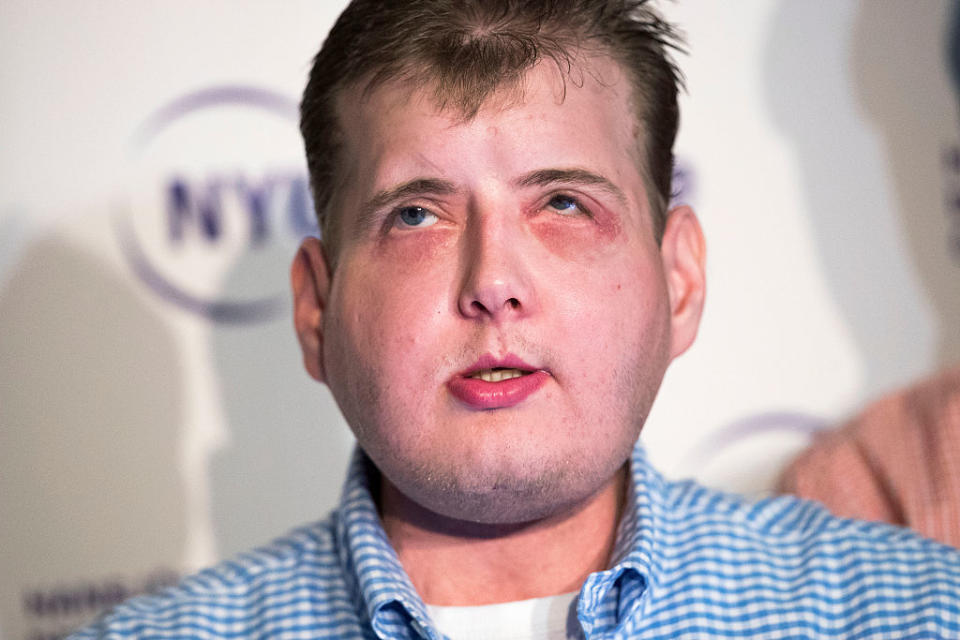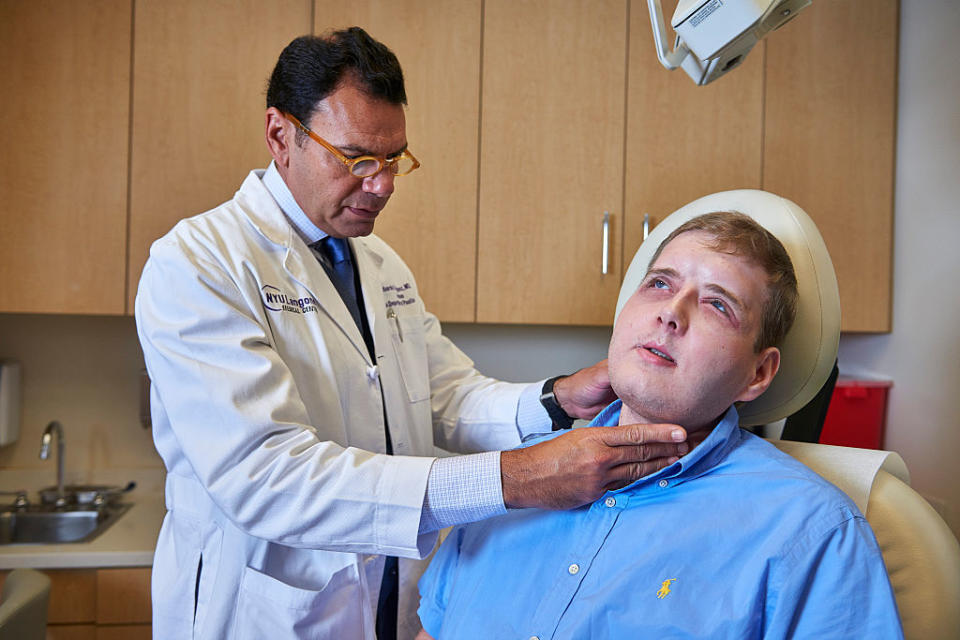Firefighter who had world’s most extensive face transplant says he didn’t fear death

The man who received the world’s most extensive face transplant has said he didn’t fear dying during the procedure because ‘death was not the worst outcome’.
Patrick Hardison, 43, suffered burns while working as a volunteer firefighter in his hometown of Senatobia, Mississippi, in September 2001 when a burning ceiling fell on him.
Speaking about his life-altering operation, Mr Hardison said he was given a 50/50 chance of survival after a patient who had undergone similar surgery in France had died.
However, he said he never thought about backing out of the procedure because ‘death is not the worst thing that can happen’.
He told the Detroit Free Press that he ‘bet it all’ but won that bet.
‘I had been miserable for 14 years by this time,’ he said.

Mr Hardison’s helmet and breathing apparatus melted while he was trying to put out a fire and his ears and eyelids were burned off.
MOST POPULAR STORIES ON YAHOO UK
Tired driver had ‘mini-sleep’ before four-carriage train crashed into buffers at Kings Cross
Millionaire surgeon to rebuild six-bedroom mansion which collapsed as he tried to install super-basement
These are the eight different prototypes aiming to be Donald Trump’s Mexico border wall
Briton jailed for ‘touching man’s hip’ in Dubai bar is freed and has passport returned
He spent 63 days in a burn unit after the incident, where surgeons removed skin from his thighs and grafted it on to his face.
He had more than 70 surgeries in the ten years that followed. He said people, including his own children, were afraid of him because of his appearance.

The father-of-five considered a face transplant in 2011 when he was told he risked losing his sight because his eyelids were missing.
‘I never wanted to back out,’ he said. ‘Death is not the worst thing that can happen. I told the doctor that I’d rather be dead than live like I was.
‘The only surgery close to mine was attempted in France and the patient died. I knew all that before I went in, but I was willing. All or nothing, that’s what I wanted to do. I bet it all.’

A team of more than 100 at New York University Langone Medical Center, led by Dr Eduardo Rodriguez, performed the face transplant in August 2015 – the surgery lasted for 26 hours.
Mr Hardison was given the face of David Rodebaugh, 26, a bike mechanic who died in a cycling accident in the summer.
‘I can go places with my kids now,’ said Mr Hardison. ‘I went to Disney World last year, and it’s the first time my two little boys had been anywhere where people didn’t say, “What happened?” and all that stuff.
‘Now I’m just the average guy walking down the street.

‘People – they can look at me and tell something’s happened, but they would never look at me and think that I’d had a face transplant.
‘I’m pretty much back to being a normal guy, doing normal activities. I get on up in the morning, take a shower and get ready to start my day.’
Dr Rodriguez said: ‘We are amazed at Pat’s recovery, which has surpassed all of our expectations.
‘Most significant is the lack of a rejection episode. We believe this has much to do with the methodical approach we took in the matching process to ensure that Patrick’s donor provided the most favourable match.

‘Doing so also has allowed us to reduce the levels of certain medications that Pat takes to prevent rejection.’
Mr Hardison suffered his injuries at a fire at a mobile home where firefighters believed a woman was trapped inside, but she had in fact gone fishing.
‘Kids ran screaming and crying when they saw me,’ said Mr Hardison. ‘There are things worse than dying.
‘I thought for years that I would die the way I was after I got injured. I never thought I would be sitting here today after a face transplant.’



